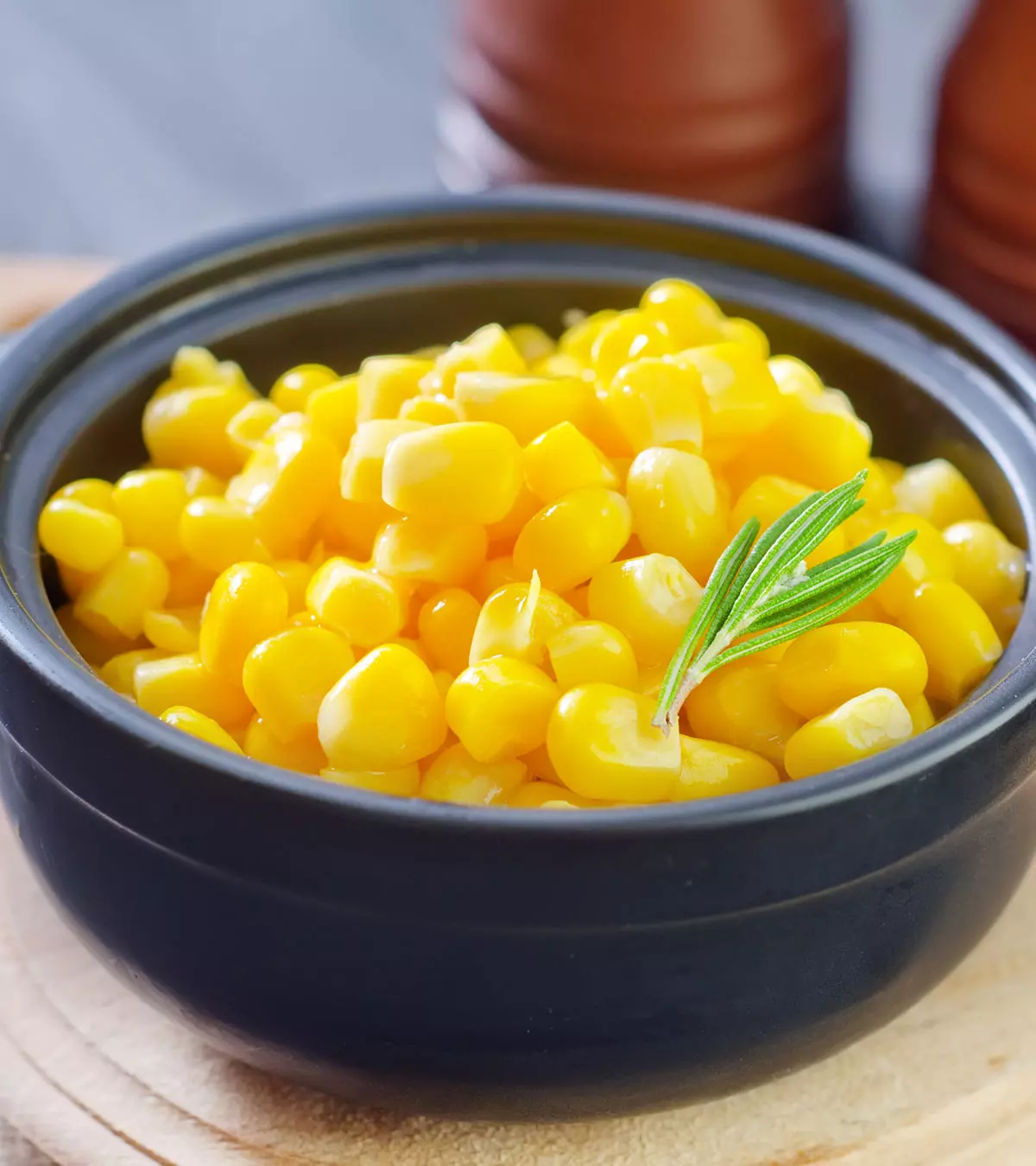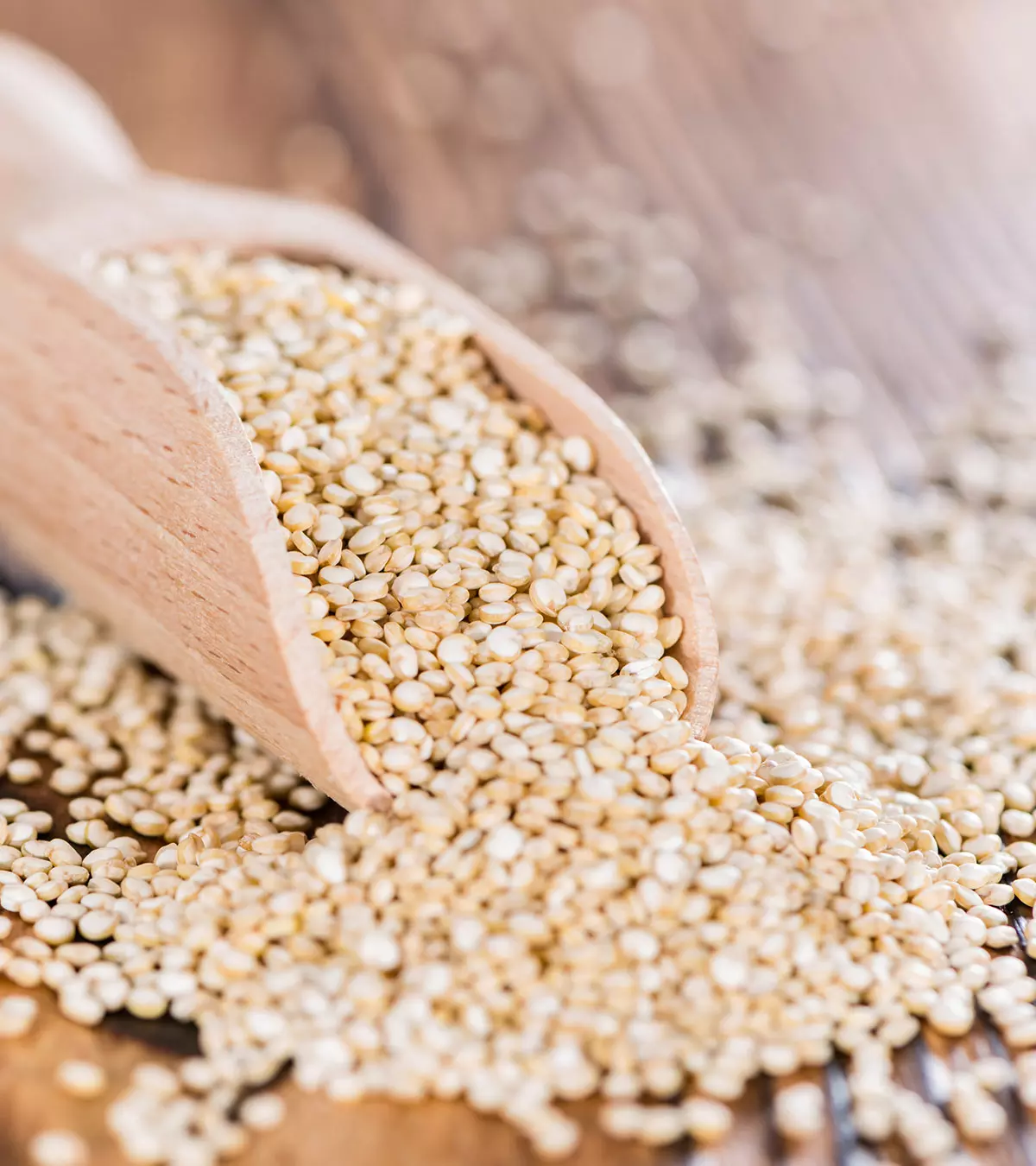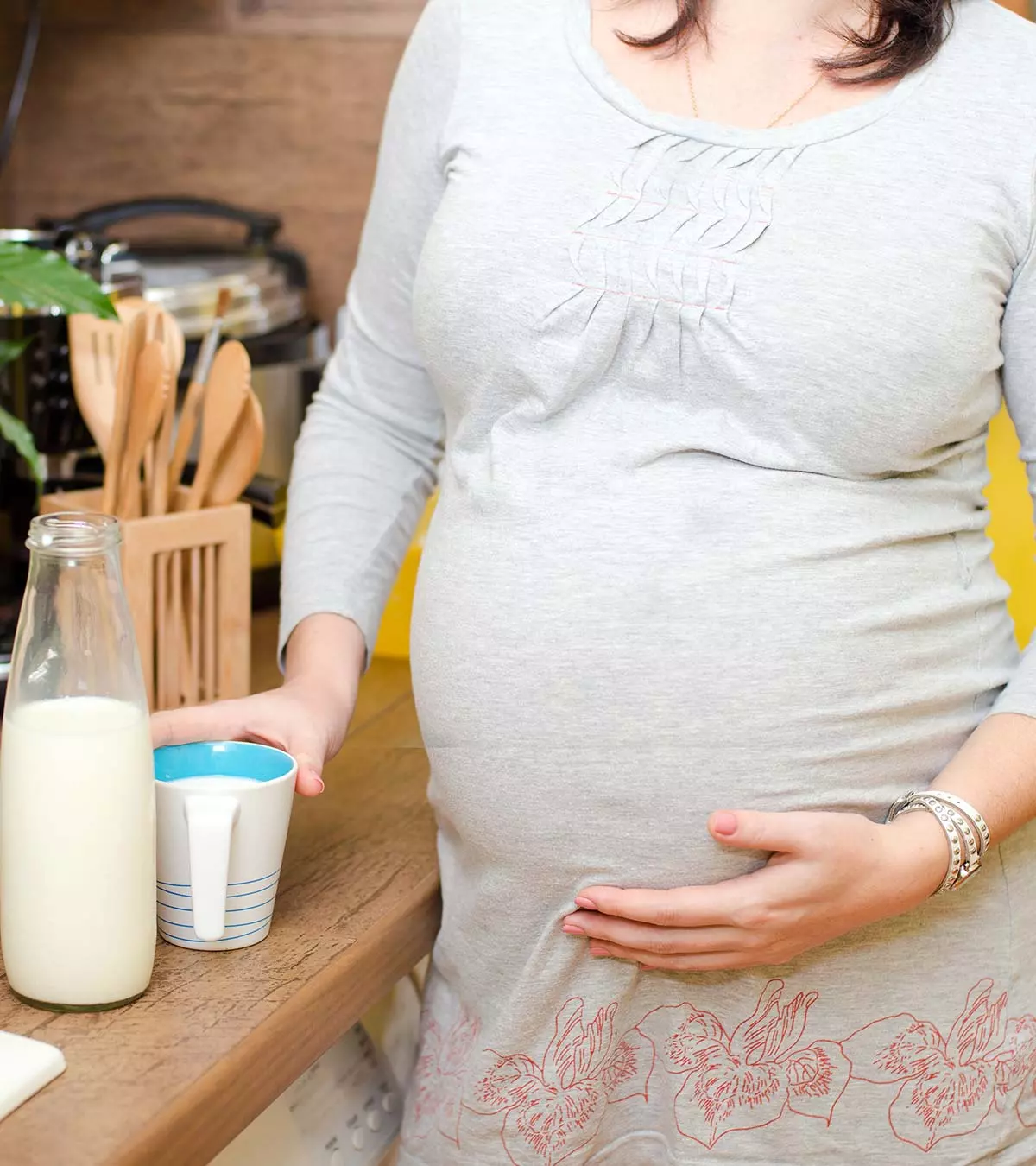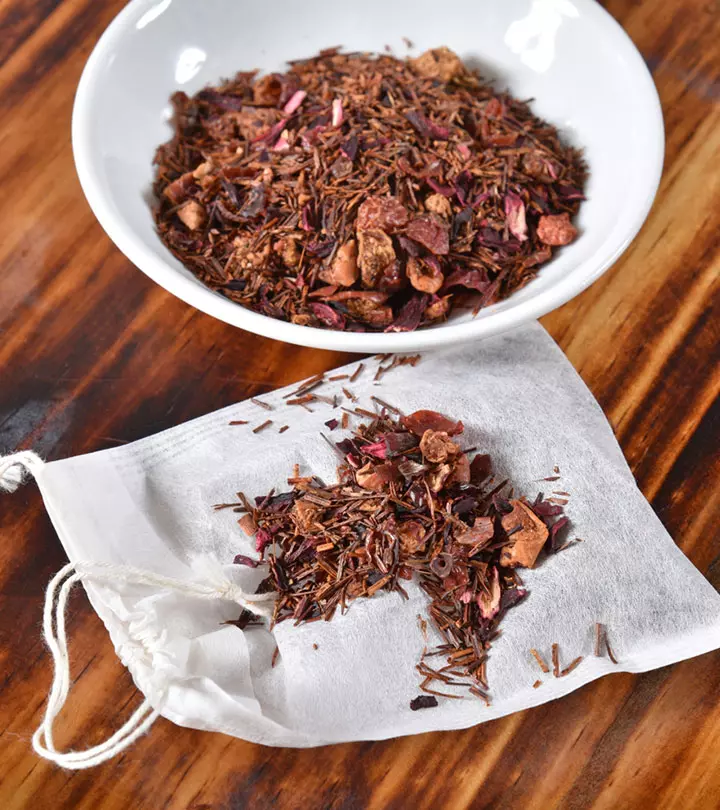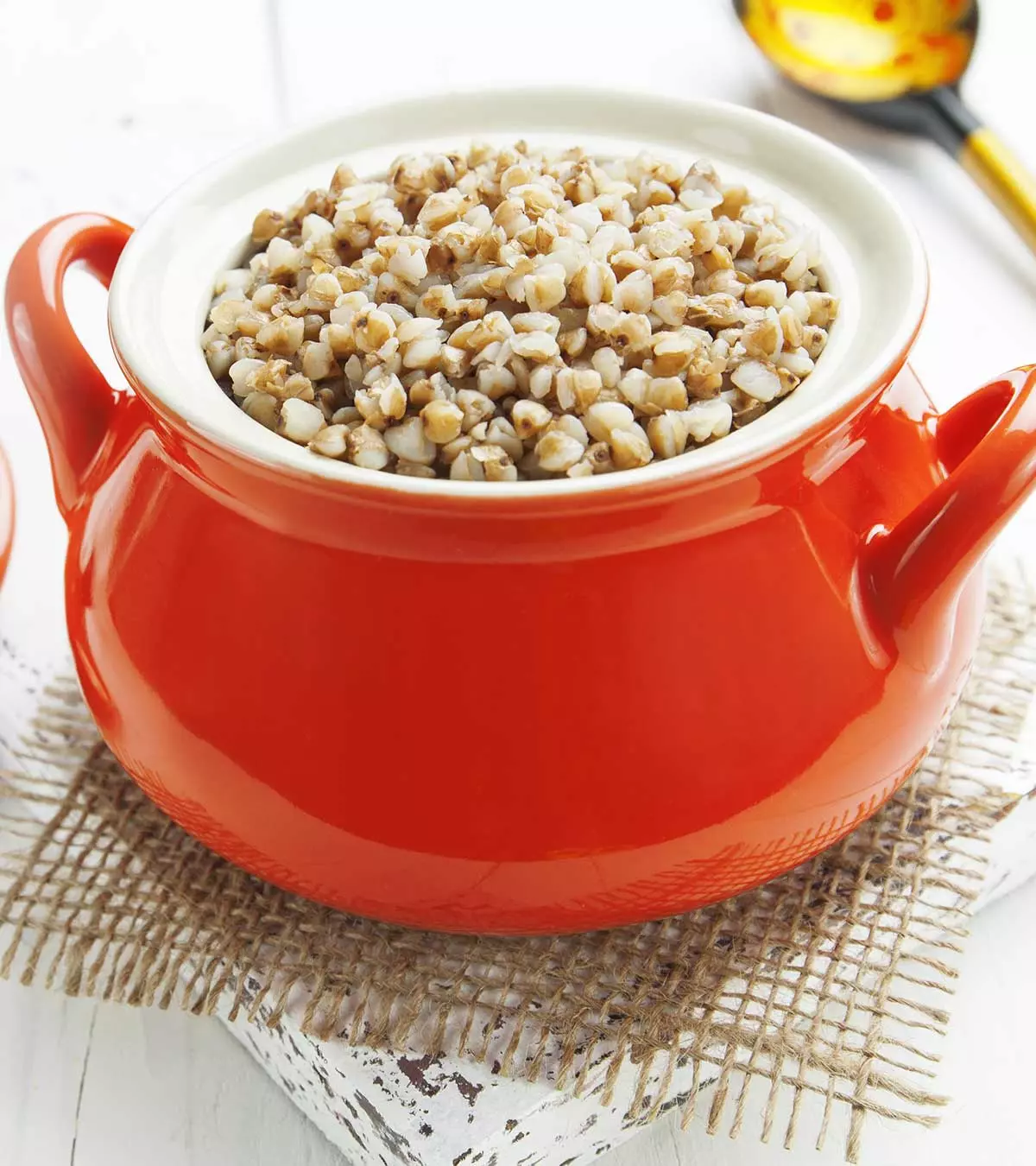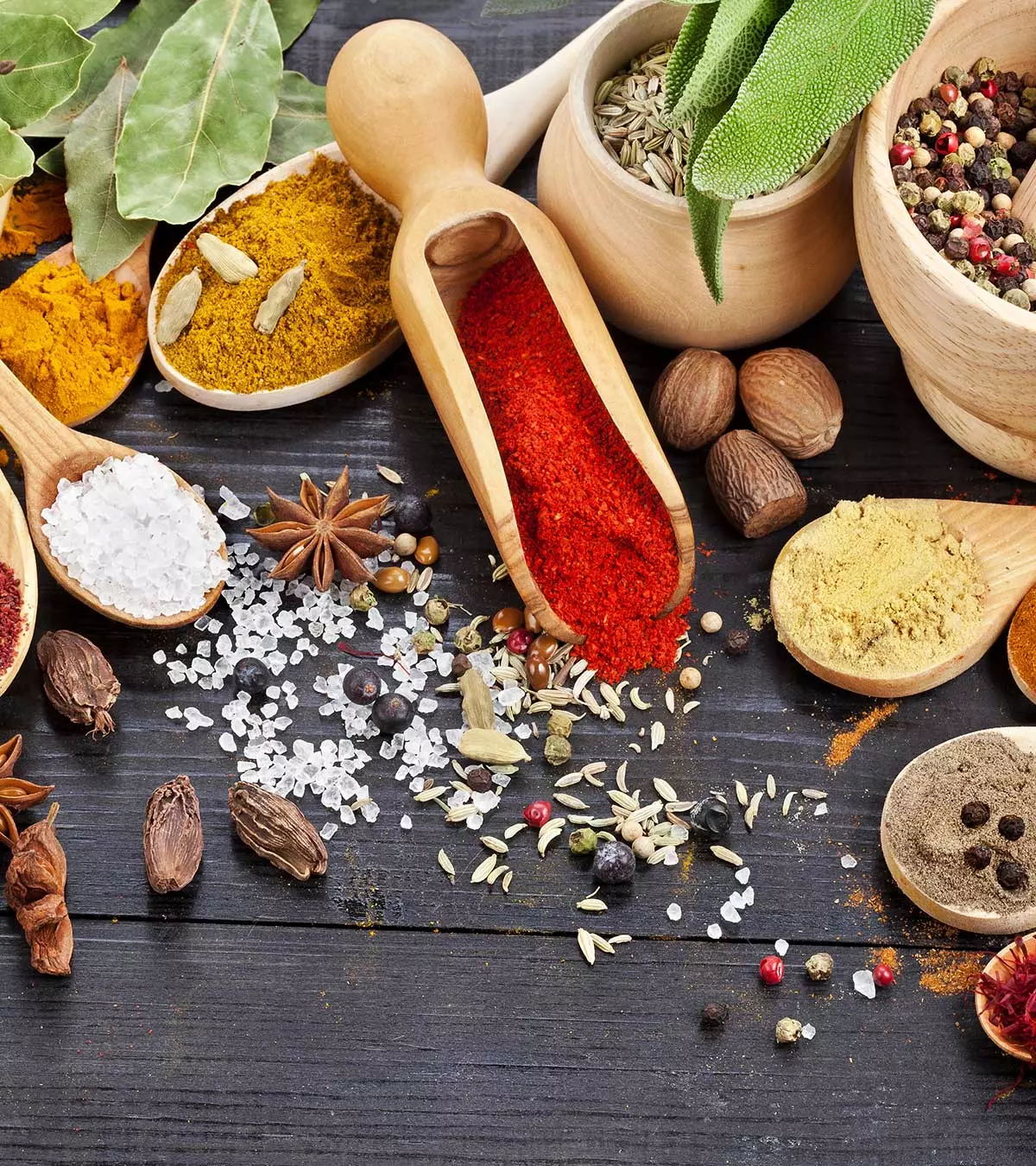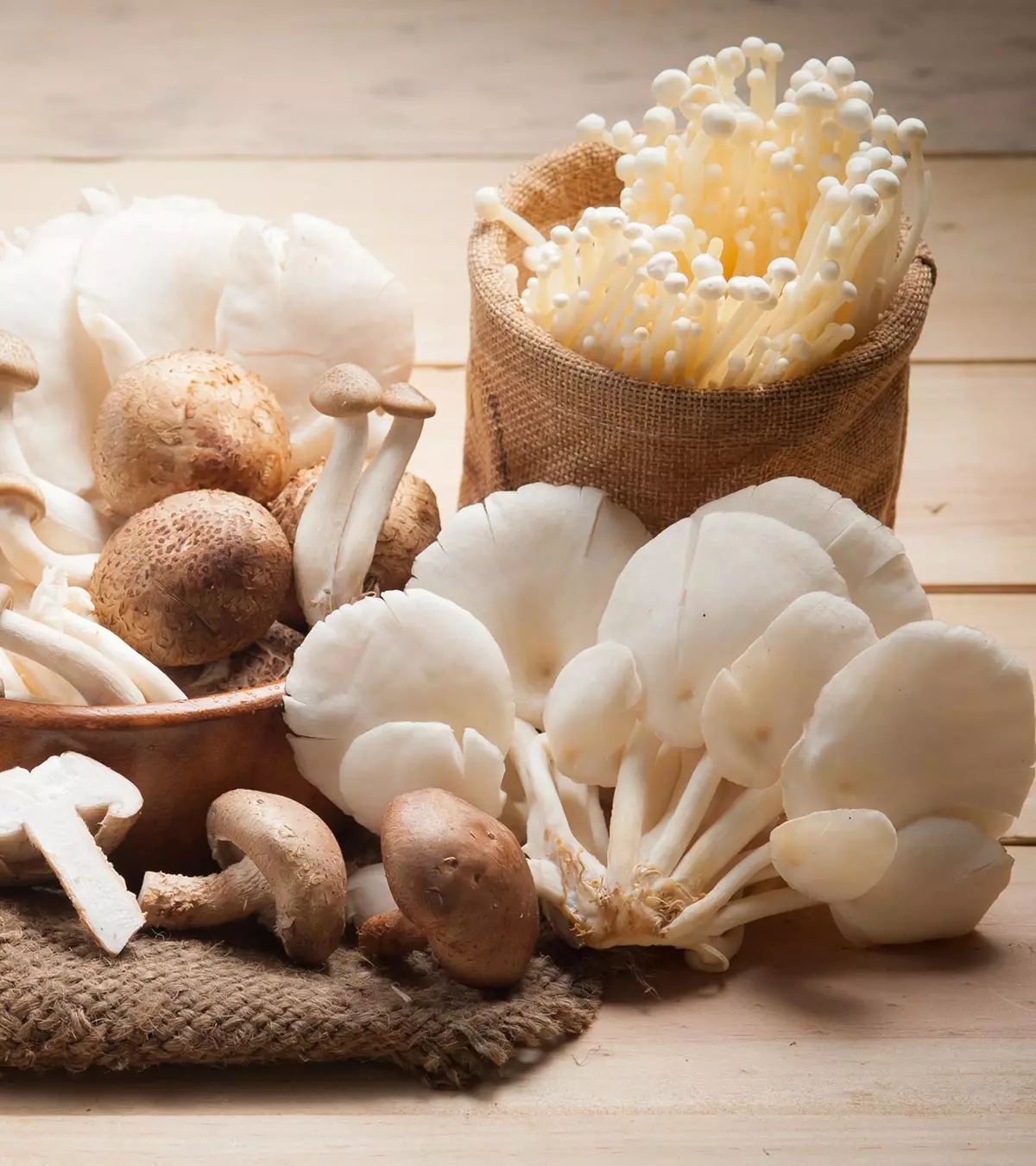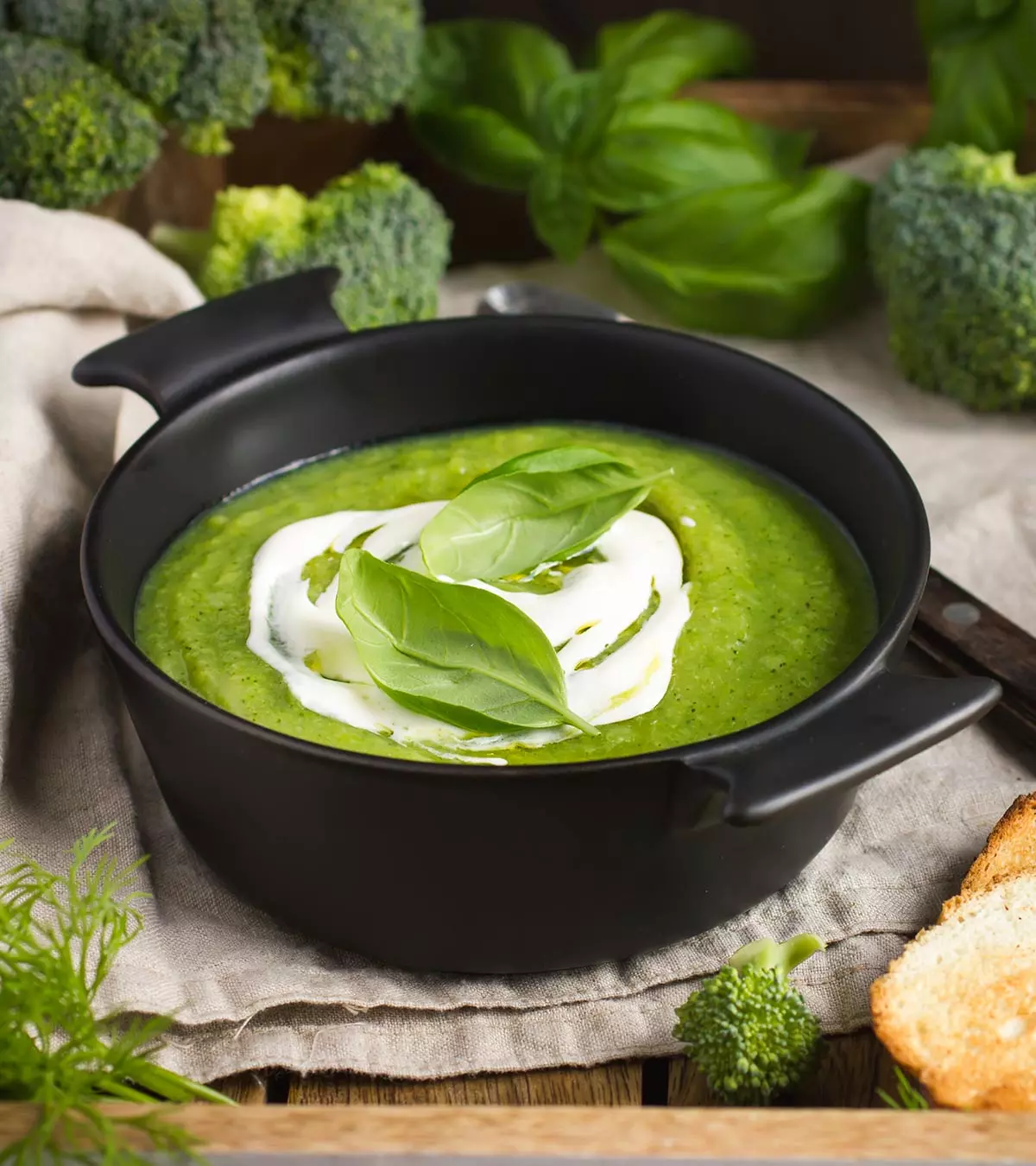
Image: iStock
Many parents may consider grapes for babies since the fruit can add taste, color, and nutrients to a baby’s meal. You can get grapes with seeds or without seeds (seedless), and the fruit comes in various hues such as red, white, green, black, and purple. Grapes are rich in micronutrients and many bioactive compounds, which offer long-term health benefits. You may offer this nutrient-dense fruit to your infant by incorporating it into sweet and savory dishes. But at what age can you safely serve grapes to your baby?
In this post, we explain more about grapes, including their potential health advantages, how to choose and store them properly, and suggest some yummy grape recipes to try.
Key Pointers
- You may begin feeding grapes to babies in a mashed form after they reach six months of age.
- Grapes are nutrient-rich and have antioxidant properties. However, seedless grapes are ideal for babies younger than ten months.
- Include grapes during snack time as finger food. Cut the grape vertically to avoid choking in smaller babies.
- If your baby is comfortable eating grapes, you may try interesting grape recipes such as mixed purees, casseroles, and smoothies.
When Can Babies Eat Grapes?
Babies can eat seedless or deseeded ripe grapes as puree or mash from six months of age (1). Once they adjust to the fruit’s taste and digestibility, you can add them to other foods, such as porridge. You can cut seedless or deseeded grapes into smaller pieces and feed them as finger food once the baby is between nine and ten months of age. It is best to introduce them as finger food when the baby has developed the pincer graspiThe developmental milestone when children can use their thumb and the index or middle finger to grasp objects . Make sure to prepare grapes in a way that suits your baby’s age and chewing ability.
How To Cut Grapes For Babies?
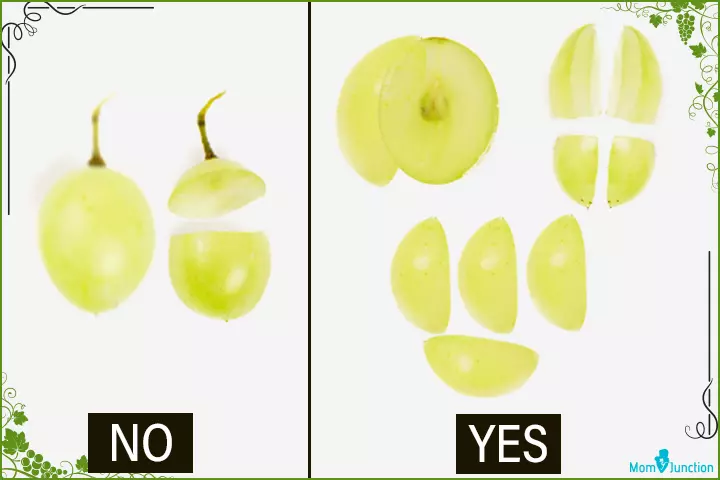
First, peel the grapes and then slice each grape lengthwise, that is, vertically, so they can pass through the smaller throats and not widthwise because they can cause choking. Remove seeds, if any. You can further quarter the grape pieces to make them suitable for consumption for young babies who have just begun eating solids. It is necessary to peel and cut grapes lengthwise to prevent accidental choking, which may happen when the baby is served whole grapes. Older babies who can chew a wide variety of solids can eat sliced grapes that have their peels intact.
 Caution
CautionNutritional Value Of Grapes
Ripe grapes (green or red) provide several nutrients, antioxidants, vitamins A, K and C, minerals like calcium, magnesium, potassium, dietary fiber, and phytonutrientsiA broad term for compounds found in fruits, vegetables, grains, and beans, possessing health-promoting properties that can benefit long-term health. Approximately ten grapes (49 grams of grapes) can offer the following nutrients to the baby (2) (3) (4).
| Nutrients | Amount | AI (7-12 months) |
|---|---|---|
| Water | 39.5g | – |
| Energy | 33.8kcal | – |
| Carbohydrate, by difference | 8.87g | – |
| Fiber, total dietary | 0.441g | – |
| Calcium, Ca | 4.9mg | 260mg |
| Magnesium, Mg | 3.43mg | 75mg |
| Phosphorus, P | 9.8mg | 275mg |
| Potassium, K | 93.6mg | 860mg |
| Vitamin C, total ascorbic acid | 1.57mg | 50mg |
| Vitamin A, RAE | 1.47µg | 500µg |
| Vitamin K (phylloquinone) | 7.15µg | 2.5µg |
AI = Adequate intake – nutrient level assumed to ensure nutritional adequacySources: U.S. Department of Agriculture and Oregon State University
Possible Health Benefits Of Grapes For Babies
The regular consumption of grapes could provide a baby with the following notable benefits.
- Provide essential micronutrients:Grapes are a source of several micronutrientsiVitamins and minerals required in small amounts that are not produced by the body and need to be taken from different sources , such as vitamin A, B C, K, and copper, manganese, potassium. Babies and toddlers need these nutrients for growth, development, blood clotting, connective tissue health, and good long-term health.
- Aid proper digestion: Dietary fiber and water in grapes can support proper digestion and healthy bowels. Experts sometimes suggest using fresh grape juice for babies and toddlers to relieve constipation (5).
- Enhance gut microbiota: Research suggests that consumption of grapes enhances gut microbiotaiThe microorganisms present in the GI tract that aid in different body functions (flora) over time. This can be attributed to the high bioactive compounds content, such as polyphenols, in grapes. Dietary fiber from grapes also acts as prebiotics, supporting long-term health (6) (7).
- Boost immunity: Grapes contain micronutrients, such as vitamins A and C, and phytochemicalsiBioactive compounds found in plant-based foods that act as antioxidants and have antimicrobial effects , such as carotenoidsiColored pigments found in plant-based foods that act as a precursor in the synthesis of vitamin A and protect cells from damage , flavonoidsiA group of naturally-occurring antioxidant and anti-inflammatory compounds found in plants and fruits , and polyphenols like resveratrol (8). These compounds hold antioxidant and anti-inflammatory properties that improve immune system function over time (9) (10).
How To Select And Store Grapes?
Here are some simple tips to select and store grapes for safe feeding.
Tips for selecting grapes
- Pick firm, plump, and well-colored grapes, firmly attached to their pliable green stems. Dry and brittle stems are a sign of poor quality. Some common grape varieties in the U.S. are Thompson seedless, flame seedless, crimson seedless, red seedless, red globe, ruby seedless, Muscat, and sugraone.
- Avoid shriveled or soft grapes with pits and spots. Discard mushy, moldy, wet, and oozing grapes with dry and brittle stems. These are signs of poor quality and decay.
- Pick fully ripe seedless varieties of grapes for babies. Green grapes are the sweetest and flavorful when yellow-green. Red and blue-black grapes are the best flavored when deeply colored.
- Healthy grapes often have a light, silver-colored dusting on the skin, called bloom. Do not discard grapes that have this dusting, thinking it is mud or dirt.
Tips for storing grapes
- As soon as you get the grapes home, wash them under cold running water thoroughly. Pat dry with a soft cotton cloth and refrigerate in a perforated plastic bag.
- Ripe grapes can be stored in the refrigerator for up to two weeks at around 30 to 32°F (-1 to 0°C). However, it is always best to eat grapes within two to three days. If you plan to store them for longer, store them in the freezer.
- Do not store grapes with foods that have a strong aroma, such as onions. Grapes tend to take on the odor from other foods.
Precautions To Take While Feeding Grapes To Babies
Following some simple precautionary steps can make eating grapes safe for babies and toddlers.
- Buy organic grapes from a reputable seller. Grapes are one of the common foods to contain high levels of pesticide residue (11).
- Begin feeding peeled, deseeded grapes in mash or puree form to your baby. Once the baby can digest the grapes comfortably, begin adding the fruit to other foods.
- Follow the three-day wait rule and feed only grapes and no other new food to your baby. It will help rule out sensitivity, intolerance, or allergy caused by grapes.
- Initially, offer small quantities of one to two teaspoons. Once your baby is comfortable, you may gradually increase the amount to a tablespoon or two.
- If your baby looks uncomfortable after ingesting grapes, stop feeding immediately, and try again later. If the problem persists, consult a pediatrician.
- Grape allergy (oral allergy syndrome or pollen fruit syndrome) isn’t common but possible. Its symptoms come up immediately after ingesting or touching grapes. Stay alert to the signs, such as itching or swelling of the mouth, face, lip, tongue, and throat. The Centres for Disease Control and Prevention (CDC) data (2021) reported that 5.8% of children aged 0 to 17 had food allergies.
- If the baby has a family history of allergies, consult a doctor before serving grapes. Babies allergic to fruits and nuts from the Rosaceae family (berries such as strawberries, cherries, apples, pears, apricots, almonds, and plums and prunes) may show cross-reactive allergy to grapes (12).
- Serve peeled, bite-sized chunks of grapes for kids and babies as finger food. Give preference to seedless varieties, and when using seeded varieties, remove their seeds and thinly slice them to prevent choking.
- Encourage older toddlers to eat small chopped slices of grapes with the skin to enjoy their health benefits to the fullest.
- Discourage toddlers from drinking grape juice unless advised by a pediatrician to treat or manage an ailment, such as constipation. You can occasionally feed up to four ounces of grape juice to toddlers aged one and three (13).
Delicious Grape Recipes For Babies And Toddlers
Below are some healthy and delectable grape recipes you can feed to your baby.
1. Apple, banana, grapes puree
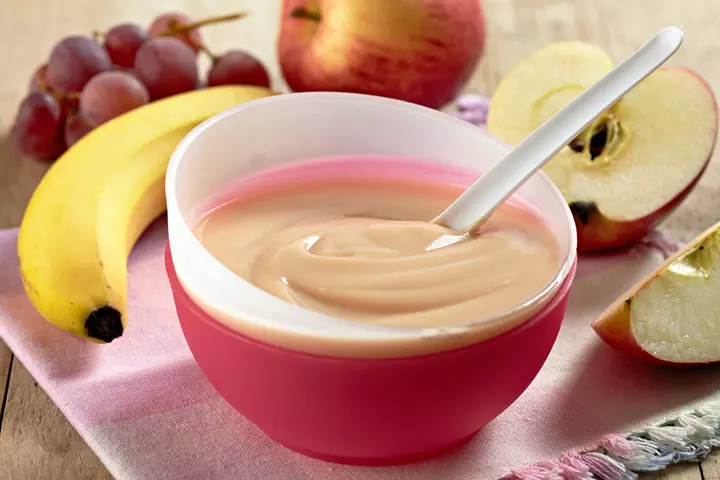
You will need:
- ½ ripe banana
- ½ apple (stewed)
- ½ cup red grapes (peeled and deseeded)
How to prepare:
- Put all the ingredients in a blender and blend into a smooth, lump-free fluid. Ensure no lumps are present.
- Pour some puree into a serving bowl and feed the baby right away.
- You can add a tablespoon of breast milk or formula to this preparation to adjust its consistency.
2. Grape and Greek yogurt
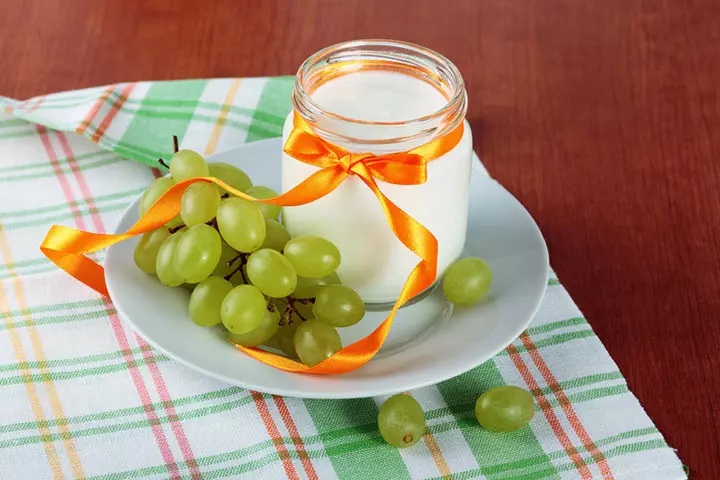
You will need:
- ½ cup green grapes (peeled and chopped)
- ½ cup unsweetened, plain Greek yogurt
- ¼ tsp dry fruit powder
- ⅛ tsp cinnamon powder
How to prepare:
- Put grapes in a bowl and mash them into a lump-free, smooth mash using a fork.
- Add yogurt, cinnamon powder, and dry fruit powder. Mix well.
- Pour some yogurt into a feeding bowl and feed the baby immediately.
3. Grape and sweet potato casserole
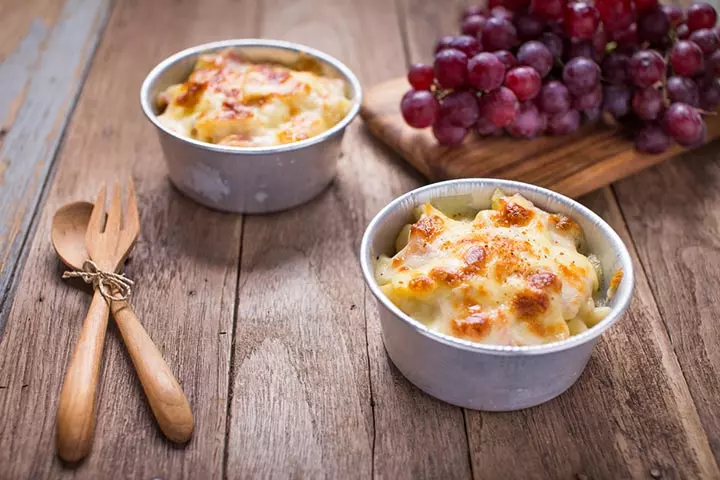
You will need:
- 1 sweet potato
- 1 cup red grapes (seedless)
- 1 cup goat cheese
- 1tsp olive oil
- ¼ tsp salt
- ¼ tsp pepper powder
- Pinch of cinnamon powder
- Pinch of nutmeg powder
How to prepare:
- Make some holes in the sweet potato using a fork. Wrap the potato into the foil and roast it in the oven at 350°F (176°C) for 45 to 60 minutes until the sweet potato looks well-cooked.
- Remove the sweet potato from the oven and set it aside on a wire rack to cool.
- Unwrap the sweet potato, remove its skin, and mash until smooth. Set aside.
- Put the grapes into a baking dish and add olive oil and salt. Toss the ingredients to coat the grapes evenly. Roast in the oven at 450°F (232°C) for 20 to 25 minutes until the grapes’ skin starts to burst.
- Take the baking dish out of the oven and set it aside to cool.
- Meanwhile, mix goat cheese, salt, pepper, cinnamon powder, and nutmeg powder with sweet potato mash. Stir in the roasted grapes.
- Spread the mixture in two small-sized casserole dishes. Bake at 350°F (176°C) for 20 to 30 minutes.
- Put some casserole in a feeding bowl and feed your baby while the casserole is still warm.
- You can add thinly sliced raisins, nuts and dried fruits for added nourishment and to enhance the nutritional value of the recipe.
4. Red grape smoothie

You will need:
- 1 cup almond milk
- ½ cup canned blueberries
- ½ cup red grapes (peeled and deseeded)
- ½ cup Greek yogurt
- 1 banana
- 1tsp dry fruit powder
- ¼ tsp nutmeg powder
How to prepare:
- Blend all the ingredients into a smooth, lump-free smoothie using a blender.
- Pour the smoothie into a feeding cup and feed the baby.
 Quick tip
Quick tip5. Grape sorbet
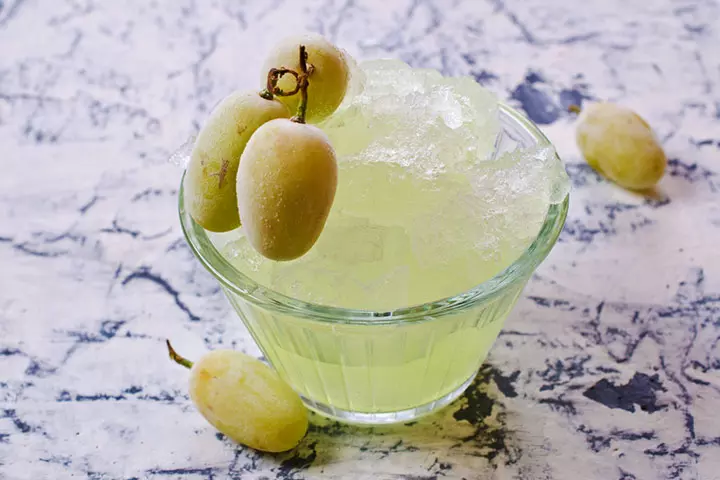
You will need:
- 1 cup green grapes (deseeded and peeled)
- 2tbsp jaggery powder
- 1tsp lemon zest (finely grated)
- 1tsp lemon juice
How to prepare:
- Put grapes on a baking sheet and freeze for at least four hours.
- Puree the frozen grapes and the remaining ingredients into a smooth paste.
- Pour the puree into a bowl and freeze for two to three hours. The sorbet is ready.
6. Grape tuna salad
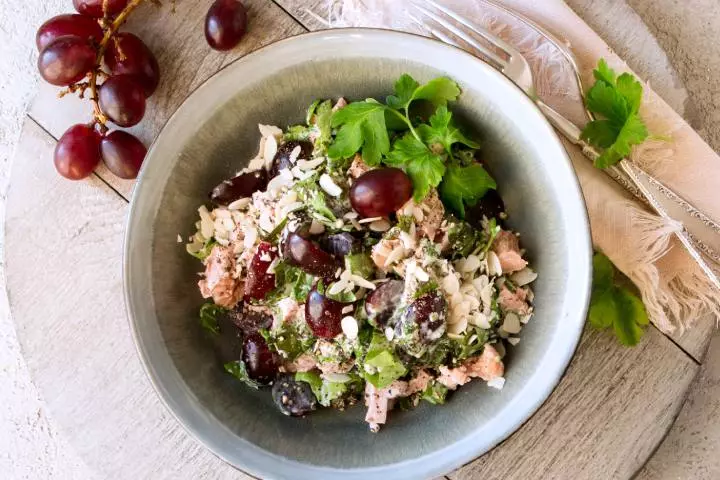
You will need:
- 150g (5.3oz) canned tuna in water or in oil (as you prefer)
- 50g (1.7oz) grapes (sliced into small pieces)
- 4 tbsp plain or Greek yogurt
- 1 tsp lemon juice
- Handful of celery or baby spinach
- Handful of lettuce
- 1 Apple, thinly sliced
- Salt and pepper
- Walnuts or raisins (powdered or cut into small pieces, optional)
How to prepare:
1. Drain tuna in a container. Add yogurt and lemon juice to it and mix well.
2. Wash the celery or baby spinach, lettuce, apple, and grapes thoroughly under running water.
3. Finely chop the vegetables and add them to the tuna mix. Stir thoroughly.
4. Top it with apple slices and chopped grapes.
5. Add a pinch of salt and pepper to taste.
6. You can also add walnuts or raisins if you like; however, make sure they are finely chopped or powdered.
7. Serve this salad bowl to your older baby or toddler immediately.
Frequently Asked Questions
1. How do I prepare grapes for my baby?
Giving grape puree without seeds to young babies is better, and you may provide raw grapes to older babies already eating raw fruits and vegetables. Cut grapes lengthwise and remove seeds to prevent choking hazards. Cut and whole grapes can cause choking in some babies. Hence, it’s important to supervise them while they are eating grapes.
2. How many grapes can a baby eat a day?
Two to four grapes can be diced and given to young babies older than six months and who are already taking solids. Older babies and toddlers can eat grapes appropriate to their age. You can give them a similar amount of regular fruit serving, such as half or a cup.
3. Can grapes cause diarrhea?
Although no clear evidence supports this, giving excess grapes to your little one may cause gastrointestinal issues such as diarrhea.
4. Can I give grape juice to my six-month-old baby?
Fruit juices are not recommended for infants younger than 12 months old, according to the American Academy of Pediatrics, as they may raise the risk of obesity and tooth decay, as well as negatively impact their growing digestive systems and preferences for food (14).
Grapes for babies can make a juicy and nutritious snack in addition to their meals. They are sweet, sour, and colorful, perfect for tingling your baby’s taste buds when starting their solid food diet. As long as you take the necessary precautionary measures, such as checking for allergies and buying only the organic and fresh ones, you can safely feed grapes to your baby in a puree or mashed form. Experiment with the recipes given and see which one your baby likes the most.
Infographic: Effects Of Excessive Grape Intake On Babies
Grapes can offer several benefits to babies when consumed in moderation. However, when consumed in excess, it may cause certain adverse effects. Generally, overfeeding grapes to babies isn’t possible, yet frequently feeding grape items, such as grape juice and grape mash or puree, might affect sensitive babies. Our infographic shares those potential side effects to help parents stay aware and informed. Illustration: Momjunction Design Team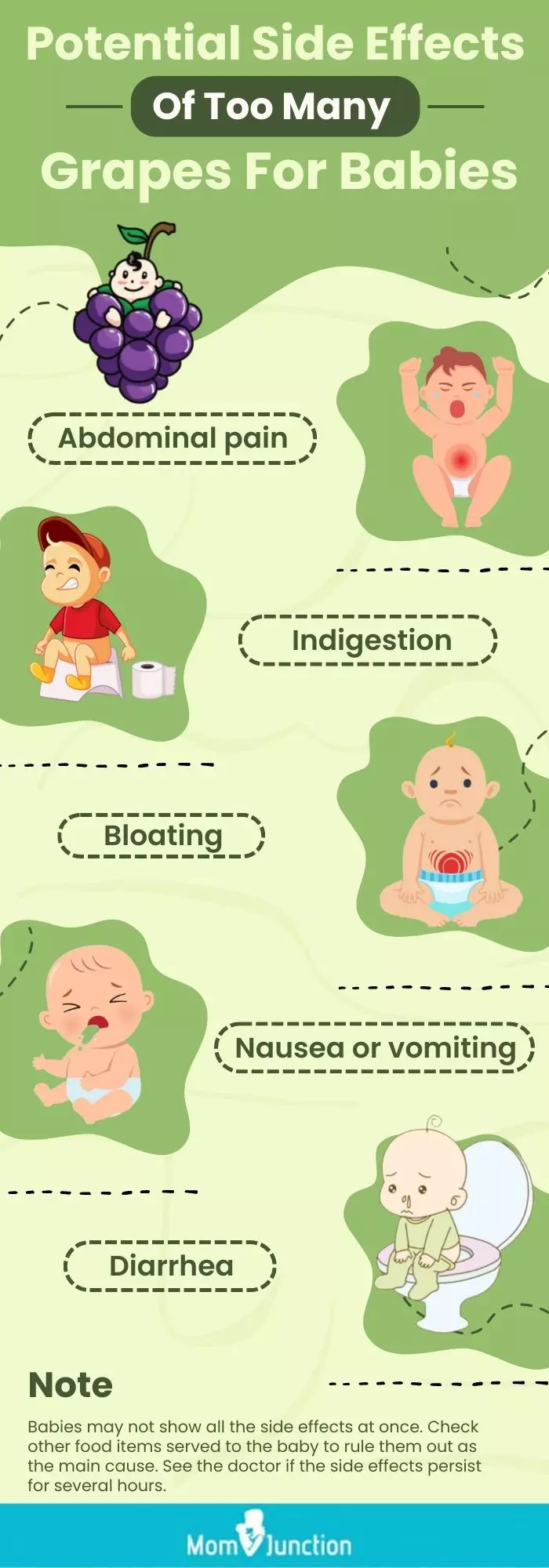
Illustration: Grapes For Babies: Right Age How To Cut Benefits & Recipes

Image: Stable Diffusion/MomJunction Design Team
Dive into the world of homemade baby food with this delightful banana and grapes puree, perfect for little ones aged seven months and up. Watch the full video for a tasty adventure.
References
1. Introducing your baby to solids; NHS
2. Grapes, red or green (European type, such as Thompson seedless), raw, FDC ID: 174683; Food data Central; USDA
3. Dietary Guidelines for Americans, 2020-2025; University of Arkansas for Medical Sciences
4. Potassium; Oregon State University
5. Constipation; Seattle Children’s
6. Victoria Nash et al.; The effects of grape and red wine polyphenols on gut microbiota – A systematic review; NCBI
7. María José Pozuelo et al.; Grape antioxidant dietary fiber stimulates Lactobacillus growth in rat cecum; NCBI
8. Eat Right. Eat Color; FANCONI
9. Muhammad Imran et al.; Health Benefits of Grapes Polyphenols; Researchgate
10. EduardaFernandes et al.; Grape polyphenol‐rich products with antioxidant and anti‐inflammatory properties; Wiley Online Library
11. EWG’s 2020 Shopper’s Guide to Pesticides in Produce; EWG
12. Anaphylactic Reactions To Cherries, Strawberries, And Grapes; AAAAI
13. AAP Recommends No Fruit Juice for Children Under 1 Year; Healthy Children; AAP
14. Where We Stand: Fruit Juice for Children; AAP
Community Experiences
Join the conversation and become a part of our nurturing community! Share your stories, experiences, and insights to connect with fellow parents.
Read full bio of Seeemaa Budhraja
Read full bio of Swati Patwal
Read full bio of Rohit Garoo
Read full bio of Ghazia Shah










